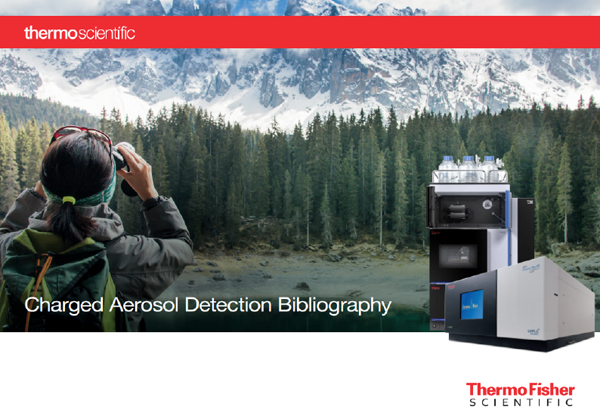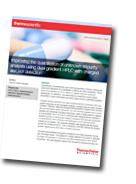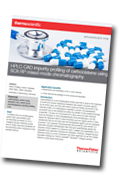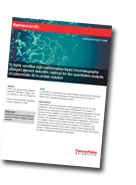Thermo Fisher Scientific offers a number of resources to help you learn how charged aerosol detection can be used for both routine and complex analyses and understand more about the versatility of this novel technique.

See how other labs use this novel detection method

- Since its introduction, charged aerosol detection has become the preferred universal LC detector for both routine and complex analyses.
- Charged aerosol detection has the ability to measure any non-volatile and semi-volatile analytes at sub-nanogram levels, and does not require ionization or a chromophore.
- This bibliography highlights the breadth and scope of different analytical methods found in the literature.
- Download this bibliography for a detailed list of published articles.
Improving the quantitation of unknown impurity analysis using dual gradient HPLC with charged aerosol detection

- Learn about how to improve the quantitation of unknown impurities with CAD achieving near uniform response for all nonvolatile analytes when inverse gradient post-column addition is used.
- See response deviation decreased across the investigated compound set to ~13% compared to the 46% without the inverse gradient applied and >60% with UV-based detection.
- Achieve good correlation in the linear response curves, while allowing the use of a single calibrant to calculate the mass concentration of unknown impurities independent of their optical properties.
HPLC-Charged Aerosol Detection impurity profiling of carbocisteine using mixed-mode chromatography

- Learn about a modernized and translated UHPLC-CAD method.
- See LOQs reduced by an average of 44% across all impurities
A highly sensitive high-performance liquid chromatography charged aerosol detection method for the quantitative analysis of polysorbate 80 in protein solution

- Polysorbates are non-ionic surfactants commonly used in biotherapeutic formulations to prevent surface adsorption and stabilize proteins against aggregation. However the quantitative analysis of polysorbate is challenging due to its complexity and lack of natural UV chromophores, and is, therefore, difficult to analyze by UV detection.
- Learn about the determination of Tween 80 in protein solution with a highly sensitive charged aerosol detection (CAD) method.





